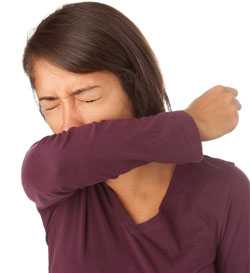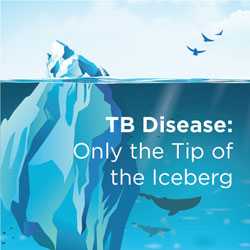Tuberculosis (TB) Disease: Symptoms & Risk Factors
 Tuberculosis (TB) is a disease caused by bacteria that are spread through the air from person to person. If not treated properly, TB disease can be fatal. People infected with TB bacteria who are not sick may still need treatment to prevent TB disease from developing in the future. Learn to recognize the symptoms of TB disease and find out if you are at risk.
Tuberculosis (TB) is a disease caused by bacteria that are spread through the air from person to person. If not treated properly, TB disease can be fatal. People infected with TB bacteria who are not sick may still need treatment to prevent TB disease from developing in the future. Learn to recognize the symptoms of TB disease and find out if you are at risk.
Latent TB infection and TB disease
The bacteria that cause TB is spread through the air from person to person. The TB bacteria are put into the air when a person with TB disease coughs, sneezes, speaks, or sings. People nearby may breathe in these bacteria and become infected. There are two types of TB conditions: latent TB infection and TB disease.
TB bacteria can live in the body without making you sick. This is called latent TB infection. In most people who breathe in TB bacteria and become infected, the body is able to fight the bacteria to stop them from growing. People with latent TB infection do not feel sick, do not have any symptoms, and cannot spread TB bacteria to others.
If TB bacteria become active in the body and multiply, the person will go from having latent TB infection to being sick with TB disease.
People with TB disease usually have symptoms and may spread TB bacteria to others.

A cough lasting 3 weeks or longer is a symptom of TB disease.

People with latent TB infection do not have symptoms, but may still need treatment.
TB bacteria most commonly grow in the lungs, and can cause symptoms such as:
- A bad cough that lasts 3 weeks or longer
- Pain in the chest
- Coughing up blood or sputum (mucus from deep inside the lungs)
Other symptoms of TB disease may include:
- Weakness or fatigue
- Weight loss
- No appetite
- Chills
- Fever
- Sweating at night
TB Risk Factors
Anyone can get TB , but people at high risk generally fall into two categories:
- People recently infected with TB bacteria
- People with medical conditions that weaken the immune system
You are at increased risk for being infected with TB bacteria if:
- You have spent time with a person with TB disease
- You are from a country or have visited areas where TB disease is very common
- You live or work where TB disease is more common, such as a homeless shelter, prison or jail, or long-term care facility
- You are a health-care worker who works with clients or patients who are at increased risk for TB disease
You have a higher chance of getting TB disease once infected if:
- You have HIV infection
- You are a child younger than 5 years of age
- You have recently been infected with TB bacteria in the last two years
- You have other health problems that make it hard for your body to fight disease
- You smoke cigarettes or abuse alcohol and/or drugs
- You were not treated correctly for latent TB infection or TB disease in the past
Eliminating TB in the United States
Millions of people in the United States have latent TB infection. Without treatment, they are at risk for developing TB disease. Treatment of latent TB infection is essential to controlling and eliminating TB in the United States. If you think you may have latent TB infection, TB disease, or were exposed to someone with TB disease, contact your health care provider or your TB control office. You and your health-care provider can discuss your options for testing and treatment.
- Page last reviewed: January 7, 2016
- Page last updated: January 7, 2016
- Content source:
- National Center for HIV/AIDS, Viral Hepatitis, STD, and TB Prevention
- Page maintained by: Office of the Associate Director for Communication, Digital Media Branch, Division of Public Affairs




 ShareCompartir
ShareCompartir